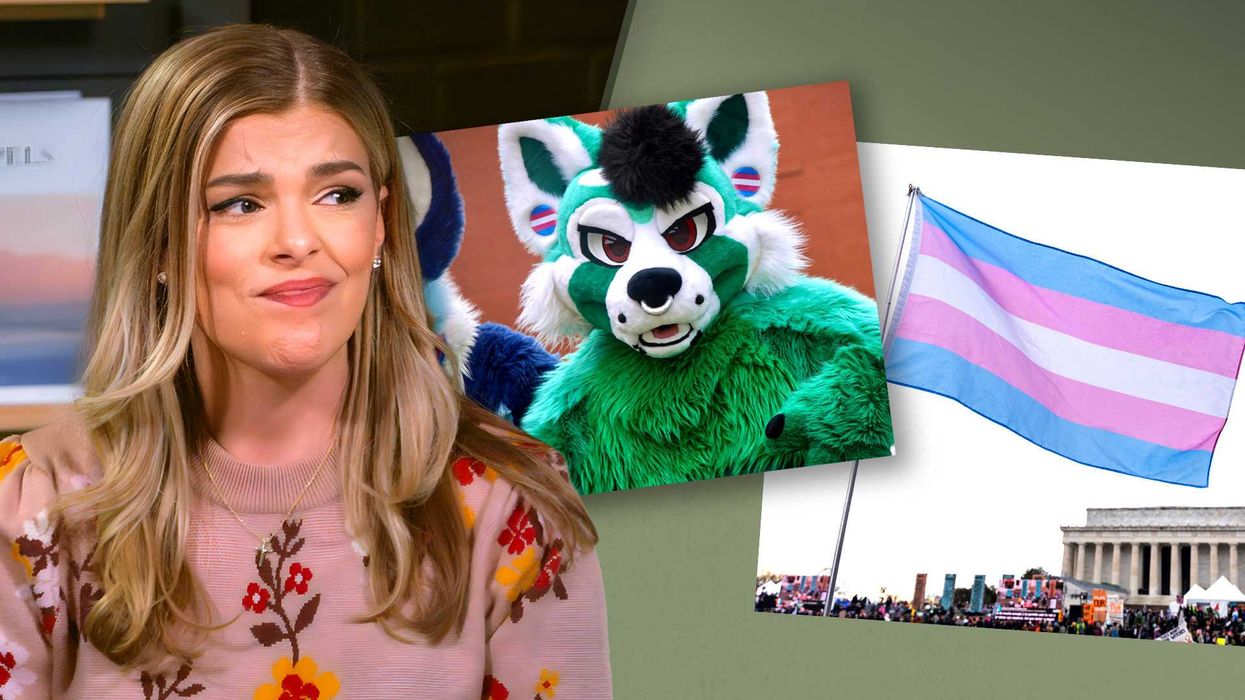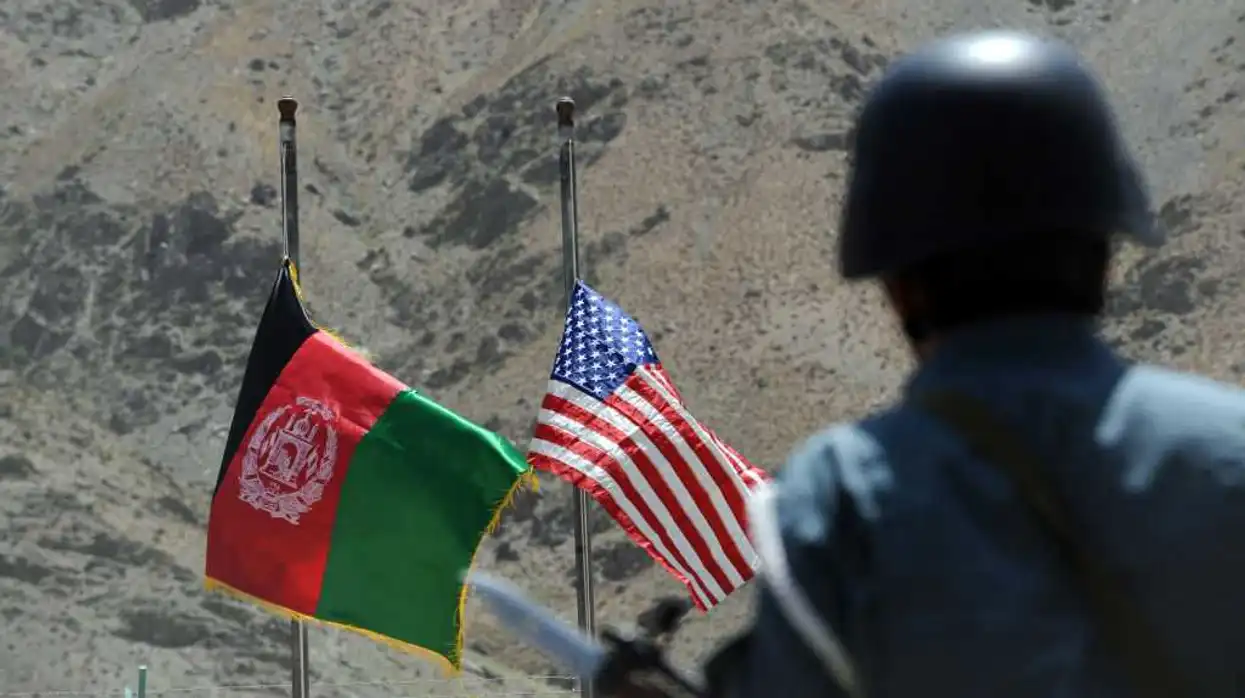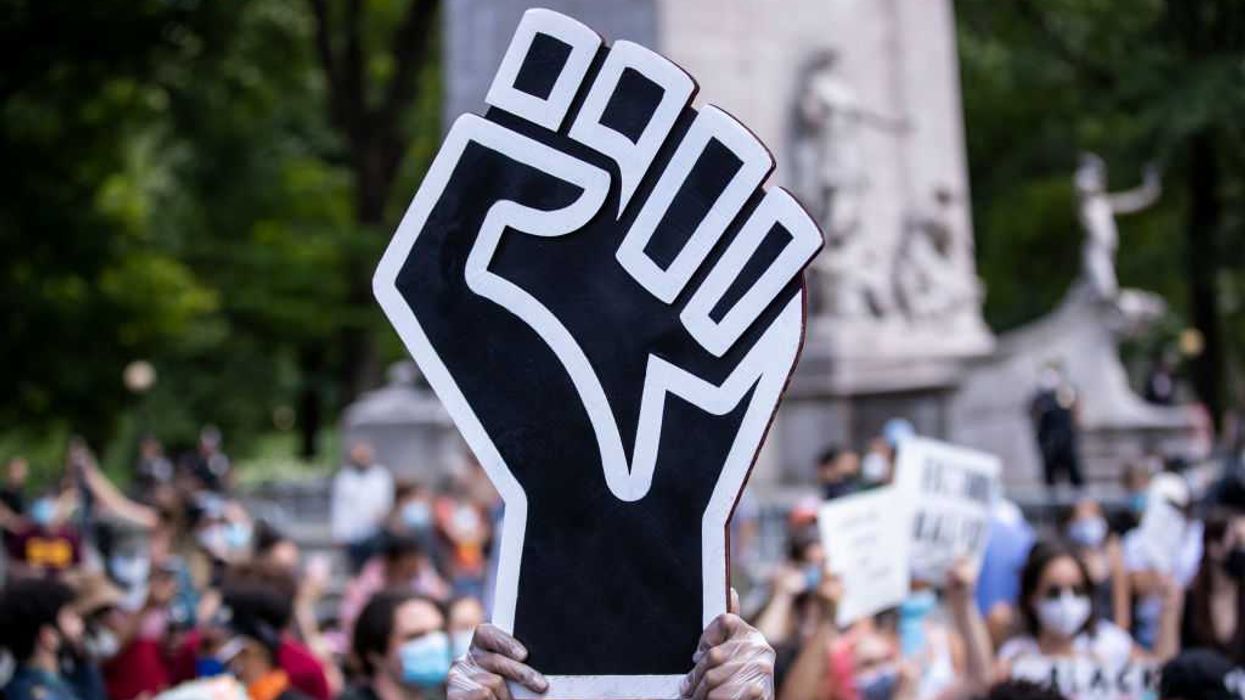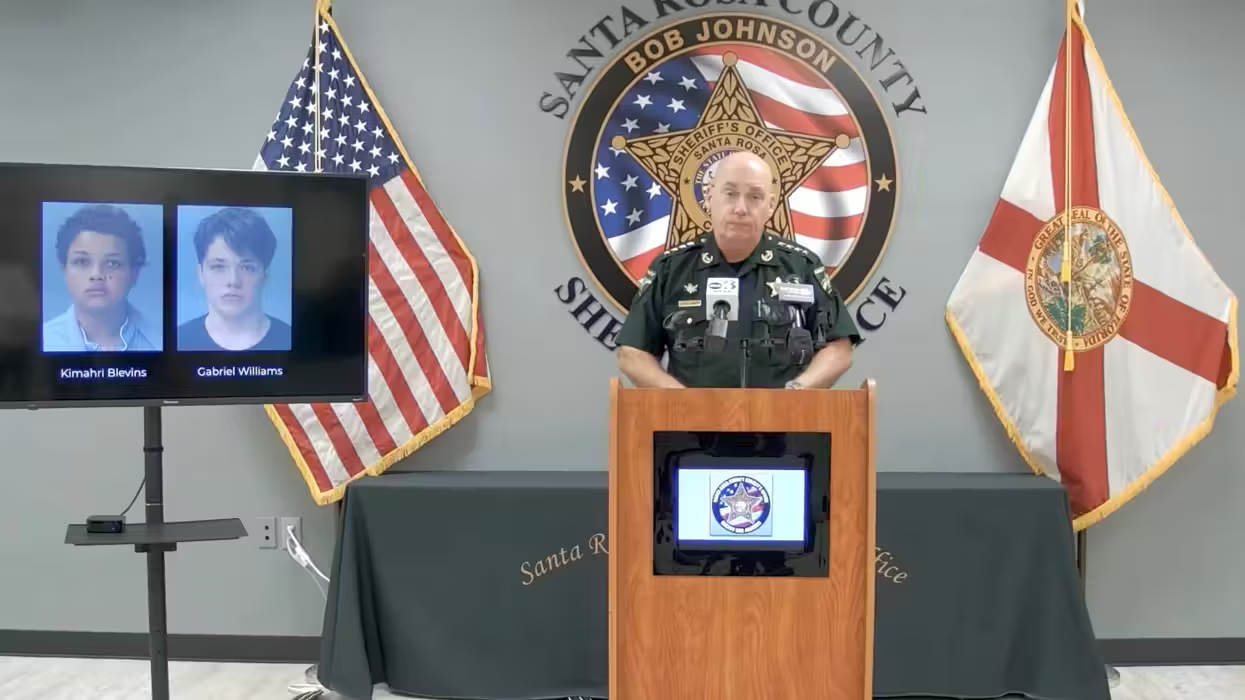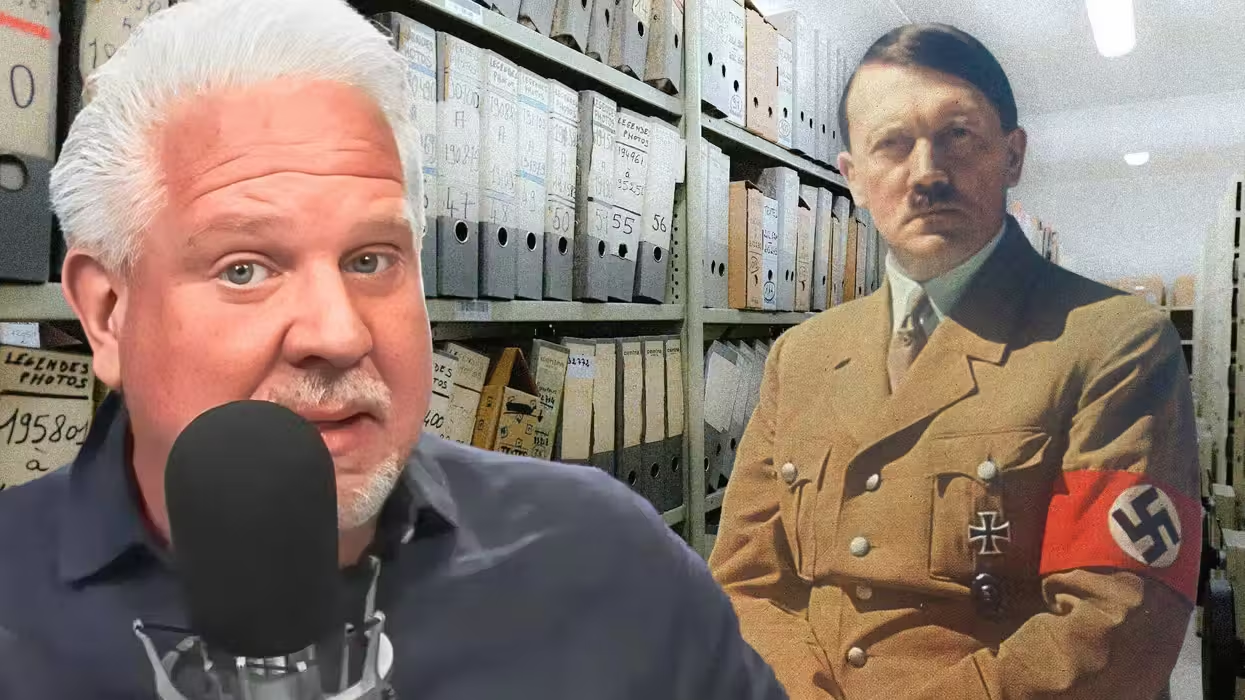
© 2025 Blaze Media LLC. All rights reserved.
George Will says these are the three most important things to happen in baseball since WWII
March 28, 2014
If you have even a passing interest in baseball, Americana, history, philosophy, culture, faith, poetry, politics, entrepreneurship and beer, not necessarily in that order, you'll want to check this book out.
George Will is out with a new book just in time for Opening Day (at least on American soil) that covers the trials and tribulations of Will's beloved Chicago Cubs and more importantly the home that has defined them for the last century, Wrigley Field titled "A Nice Little Place on the North Side: Wrigley Field at One Hundred."
But the book is about much more than that. Other topics amply covered include Americana, history, philosophy, culture, faith, poetry, politics, entrepreneurship and beer, not necessarily in that order. It is about baseball in all its forms (usually poor ones when speaking of the Cubs), and its widespread influence which goes well beyond the baseball diamond.

As a sneak peek, here's a short excerpt from the book in which George Will tells us the three crucial events to happen in baseball since the end of World War II:
"The three most important things that have happened in baseball since the Second World War were Jackie Robinson taking the field in Brooklyn in 1947, free agency arriving in 1975, and Oriole Park at Camden Yards opening in 1992. This last was an act of heroic nostalgia but, then, baseball fans are disposed to live with cricks in their necks from looking backwards. Which is why Major League Baseball owes a debt to a willowy woman from Mississippi. To those who said, "You can't turn back the clock," Janet Marie Smith responded, "Well, we'll just see about that."
Jackie Robinson of course courageously broke the color barrier in baseball, paving the way for greats such as Hank Aaron and Willie Mays, under the visionary leadership of perhaps baseball's original Billy Beane (he of "Moneyball"), the beloved Branch Rickey.
 1956 Topps Jackie Robinson card. (Image Source: www.vintagecardprices.com)
1956 Topps Jackie Robinson card. (Image Source: www.vintagecardprices.com)
Will describes Robinson's first game at Wrigley Field in 1947, which brought a semblance of peace to a city in Chicago which had been marked by racial tension since the early 20th century. In front of a record crowd, Will notes that half of it were African Americans, "probably the largest concentration of African Americans in the history of the North Side [of Chicago] up to that point. No unpleasant incidents were reported."
[instory-book ISBN="9780385349314"]
Further, showing a sign of the times and what attending a baseball game was actually like in the mid-20th century, not to mention the almost religious reverence for Robinson, contrasted with continued underlying racial tension:
"A Cub official told the paper [the Chicago Defender, published by and for African Americans] that this was "the most orderly large crowd in the history of Wrigley Field. We were pleased to note that the Negro fans behaved better than our average Sunday fans for which we thank the Defender for its part in this..." On the day of Robinson's first visit to Wrigley Field, [Pulitzer Prize-winning Chicago Columnist Mike] Royko remembered seeing something that was, indeed, common when the Dodgers visited a city that year: African American fans came to the game dressed as though for church: "white shirts, ties, gleaming shoes, and straw hats..." He remembered that when Robinson, who was batting second, approached the plate in the first inning, there was "long, rolling applause" but that when he stepped into the batter's box, 'it was as if someone had flicked a switch. The place went silent.'"
On the abolition of baseball's reserve clause and thus the introduction of free agency in 1975, this tangentially touched the Cubs in some respects in a sore spot.
Yesterday news broke that 2013 Triple Crown winner Miguel Cabrera had agreed with the Tigers to a 10-year contract extension worth $292 million. But to those playing baseball before 1975, and even through the 1980s, a contract of such magnitude would have been simply unfathomable.
 Curt Flood leaps into the ivy at Wrigley Field. (Image Source: eBay/customsportsusa)
Curt Flood leaps into the ivy at Wrigley Field. (Image Source: eBay/customsportsusa)
In the old days, players worked second jobs in the offseason -- including those requiring hard physical labor -- to supplement their generally meager salaries.
But in 1975, Dodgers pitcher Andy Messersmith and Orioles pitcher Dave McNally built on the prior efforts of the Cardinals' Curt Flood (who himself had been supported by none other than Jackie Robinson, along with Tigers' great Hank Greenberg) to open baseball up to free agency by a court-ordered effective nullification of the reserve clause from Major League contracts.
Why did this touch a sore spot? Flood, a three-time all star and seven-time Gold Glove winner likely regularly tortured the Cubs as a member of the hated (and vastly superior) St. Louis Cardinals from 1958-1969, with the Cardinals, world champions in 1964 and 1967 playing the Cubs up to 19 times a season.
To add insult to injury, thanks to Flood's initial challenge of the reserve clause in 1970 which paved the way for free agency in 1975, now the lovable losers would have to compete against other teams not just in scouting but in finances too.
On Camden Yards, the home of the Baltimore Orioles since its opening on April 6, 1992, its construction started a trend in baseball toward new retro ballparks in big cities. As Will notes:
 Oriole Park at Camden Yards, home of the Baltimore Orioles. (Image Source: Wikipedia)
Oriole Park at Camden Yards, home of the Baltimore Orioles. (Image Source: Wikipedia)
"Twenty major league parks have opened since Camden Yards did, sixteen of them in downtown settings. Those sixteen have changed how people use cities. And the cities, by forcing the ballparks to conform to the urban context, have changed how the game is played, for this reason: Baseball is the only sport that does not specify the dimensions of the playing area, leaving latitude for different sizes and shapes of outfields. So, [the aforementioned Janet Marie] Smith says, when a ballpark is built in an existing urban neighborhood, the city is the tenth player on the field. This is notably so in the new ballpark most influenced by Wrigley Field."
 Two of the newer retro ballparks include the New York Mets' Citi Field (left), opened in 2009, and the Pittsburgh Pirates' PNC Park (right), opened in 2001.
Two of the newer retro ballparks include the New York Mets' Citi Field (left), opened in 2009, and the Pittsburgh Pirates' PNC Park (right), opened in 2001.
Camden Yards as noted in Will's description of the odyssey of Janet Marie Smith, which culminated in its creation (along with later that of the Atlanta Braves' Turner Field, and renovations to the classic Red Sox's Fenway Park and eponymously-named Dodger Stadium), was influenced by Wrigley Field in its architecture and associated ambience.
However, the stadium most influenced by Wrigley is the home of a team of which I am quite jealous (as a suffering Mets fan), the San Francisco Giants, who claim as their home AT&T Park.
 AT&T Park in San Francisco, home of the Giants. (Image Credit: John Phillips/CBS Radio Pittsburgh)
AT&T Park in San Francisco, home of the Giants. (Image Credit: John Phillips/CBS Radio Pittsburgh)
As Will informs us,
"In 2000, when AT&T Park, as it is now named, was new, San Francisco's then mayor, the amiable rapscallion Willie Brown, said the park felt as if it had been there for a couple of decades. Which is exactly what Larry Baer had in mind when he and his colleagues set out to replicate the feel of Wrigley Field as a neighborhood institution. Baer, president and chief executive officer of the extraordinarily successful Giants franchise, was present at the creation of the team's jewel of a ballpark. One of his challenges was to convince the neighborhood that bringing forty thousand or so people into it eighty-one times over six months would actually be pleasant. He says "the best $50,000 we spent" was for a model of the park and the neighborhood. He carted this around to meetings to assuage anxieties and even whet appetites for the pleasures of congestion caused by hordes of cheerful people. Baer was explicitly selling the idea of Wrigleyville West, and the neighborhood bought it.
If you want to read about the connections of politicians like Presidents Reagan and Roosevelt, entrepreneurs like Ray Kroc and William Wrigley, infamous folks like Al Capone and Jack Ruby, let alone the colorful players and coaches like Hack Wilson ("resembled a beer keg, the contents of which Wilson was all too familiar with"), Leo Durocher ("No one was more temperamentally opposed to Wrigley Field's golly-the-ivy-is-so-green-and-the-sun-is-so-warm-and-the-beer-is-so-cold-and-the-ambience-is-so-gosh-darned-friendly-who-cares-what-the-score-is ethos") and Ernie Banks ("his disposition...was as sunny as the ballpark in which he never performed at night"), who graced this stadium, you need to pick up this book.
Want to leave a tip?
We answer to you. Help keep our content free of advertisers and big tech censorship by leaving a tip today.
Want to join the conversation?
Already a subscriber?
Ben Weingarten is a writer, commentator, and editor at large at RealClearInvestigations. He is a senior contributor at the Federalist and writes columns for Newsweek and the Epoch Times.
Ben Weingarten
Ben Weingarten is a writer, commentator, and editor at large at RealClearInvestigations. He is a senior contributor at the Federalist and writes columns for Newsweek and the Epoch Times.
more stories
Sign up for the Blaze newsletter
By signing up, you agree to our Privacy Policy and Terms of Use, and agree to receive content that may sometimes include advertisements. You may opt out at any time.
Related Content
© 2025 Blaze Media LLC. All rights reserved.
Get the stories that matter most delivered directly to your inbox.
By signing up, you agree to our Privacy Policy and Terms of Use, and agree to receive content that may sometimes include advertisements. You may opt out at any time.

